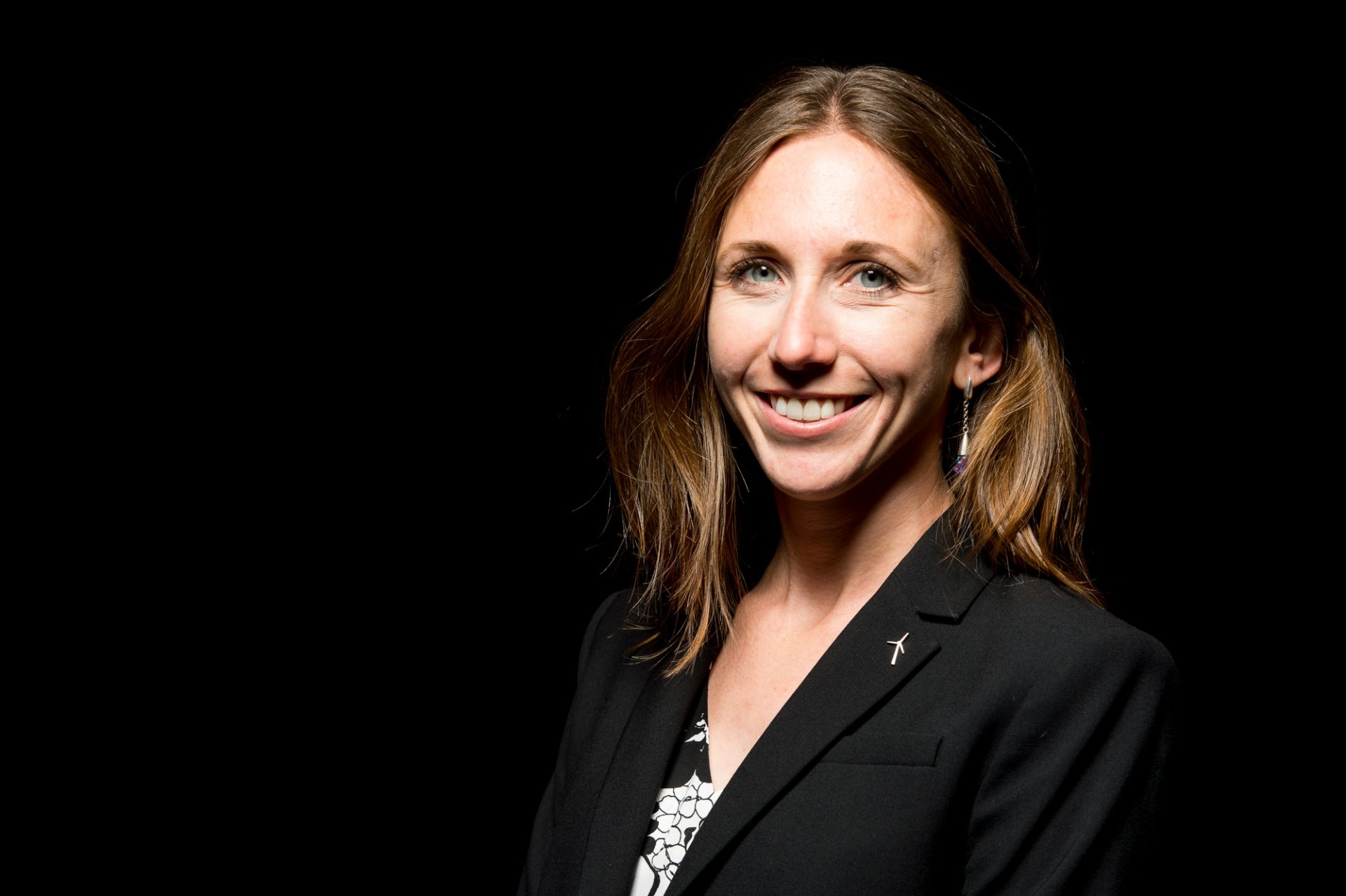As assistant director of the Northeastern Junior College’s Renewable Energy Department, what are your duties?
I handle everything from recruiting to teaching and everything in between. I work with two other gentlemen, Jason Hazlett who is the Director and Neil Brown online instructor. We pitch in and help each other out. All three of us came from the wind industry with eight years combined experience and we work as a team to provide our students with the best training possible. We build off of each other’s strengths, Jason is an engineer by trade and very sharp with the technical aspects of how things work. Neil is a former teacher as well as an air force electrician. I am a more hands on type of person; I do most of the trouble shooting and advanced schematic reading. The students have really grasped this concept and have no problem working with all three of us to get the answers they need.
NJC is located in Sterling, Colorado. How much wind energy is generated there and who are the main players?
What sets NJC apart is the large amount of wind energy that is present so close to use. We have nine sites operating within a 100-mile radius of the campus and two more sites being built this summer. As of 2012, there are 10 wind companies/employers operating these sites. There are over 800 MW and another 200 MW being added this summer. The biggest player here is NextEra Energy and GE, but Vestas, Invenergy, enXco, Mitsubishi and BP are all operating sites near us. We have great relationships with the companies and they have been a tremendous help in our success, each company has a representative that sits on our advisory council, which is a huge help. I cannot say enough about the strong support we get from each company.
Why did NJC create the associate degree for wind technology?
NJC has a long history of creating vocational degree programs that benefit our local economy and community. As the number of wind sites was increasing in our area, we approached the local companies to see if they would benefit from a training program. We didn’t want to create a program that didn’t fit the industry’s needs. We formed the advisory committee from these companies and then chose classes that would address the skill set of a wind technician. We included the general education classes such as technical writing and human relations to create a well-rounded employee that could do more than turn a wrench. Due to the quick advancement into leadership roles at most wind sites, we wanted our students to have some background knowledge to be able to handle the responsibilities.
What are some of the courses a student can expect?
We offer a diverse curriculum ranging from basic electrical to hydraulics. The students will also take preventative maintenance, industrial problem solving, and wind turbine systems. About half of our classes deal with electricity, electronics, control systems, and programmable logic controllers. These concepts are the hardest to understand and the most important when it comes to safety in a wind turbine. Electricity is the one hazard that you cannot see and is the easiest to mitigate if you follow the right procedures. The students will also complete several rescue scenarios every semester to keep the skill set up to date.
All our students start our safety course in the fall and have to pass with 90% before they can continue on into the remainder of the program. I was a safety trainer for NextEra Energy before coming to NJC and I take safety very seriously as do our other 2 instructors, I always tell my students that in five years I never got hurt and I never saw anyone get hurt. I feel that my safety attitude helped keep me and my partner safe at all times. We stress safety all year long but we also lead by example. Our students are expected to call us out if we are not wearing proper PPE and stop any job that they feel as unsafe. We give our students a real world feel while they are here so that when they do transition into the work place it is a smooth one and they know what is expected of them.
Along those same lines our instructors were all previous field technicians who climbed every day and trouble shot or performed maintenance so we take the same approach in our teaching styles. We keep it as real world as possible. We believe in teaching solid fundamentals and make sure that those fundamentals are understood and able to be applied to the labs later down the road.
Do students have an opportunity to gain hands-on experience working in the wind industry or is this only classroom education?
Our students all get up a turbine during their time here. As a freshman you are looking at 60% classroom time and 40% lab time because they do not have the fundamentals of electrical, moving machinery, or hydraulics to keep them safe. Their lab time is spent mostly on simulators that we have purchased to help familiarize themselves with the functions of a wind turbine. Moving into the sophomore year things tend to get more hands on. We have a very advanced lab with trainers that we have built, and we dive heavily into schematics, component functions, troubleshooting and the ‘why’ factor. Why did this break? We have duplicated some of the most complex problems that we faced as technicians to challenge our students and make them think. We want our students to walk out of our doors being able to identify the problem, fix the problem and then come up with a solution to keep the problem from occurring again on another tower.
How many students have attended or completed their associate degree requirements?
The last graduating class in May 2012 was 17 who all achieved their AAS degree and 14 of the 17 went on to take jobs in the industry. We are very proud of this but at the same time we understand that the student is the most important person to us and we keep our classroom size to a minimum of 22, which gives our students the best opportunity to succeed and gain the most from each instructor. With a limited class size we feel that we are able to turn out a better product for the hiring managers.
What types of jobs can a student hope to have upon completion of their requirements?
In a perfect world, a wind technician job; but we tell our students that each school out there produces good quality technicians and that they need to do well during interviews and carry high GPA’s to get past the screening process. With that we also tell our students that wind is not the only opportunity. Their strong electrical knowledge can open up doors in other industries. We are very forward with our students and they know that it is a very competitive world. I stress to the students that you can never be prepared enough for an interview. You need to be calm and confident. Our success is due to our students listening and preparing for interviews. Our past group of graduates went the extra mile in being prepared and it has paid off for them.
Safety is a major consideration for workers on wind sites. What types of instruction do students receive in safety practices?
Safety is the number one issue in the industry. All students are required to take and pass CPR & First Aid and the OSHA 10 hour Construction certificate. I feel that good communication is the first line of defense. You must know what each other is doing before it is done only then do you know what to expect. Both instructors and students take a great deal of pride in our safety standard but we understand that we can always do something smarter and safer and find ourselves constantly changing the way we conduct ourselves for a safer work environment.
Tell me about the instructors at Northeastern Junior College. Do all instructors have a background in wind training?
Jason Hazlett is the Director of the program and he has 2 years with NextEra Energy working on GE 1.5 SLE’s & XLE’s.
Neil Browne was a former GE technician and has a strong teaching background.
I was a five-year tower technician for GE and NextEra Energy at Peetz, Co which is just north of the school. During this time I was in charge of all climb & clearance training that went on at the Peetz site. I am certified by GE, NextEra Energy and Siemens in multiple rescue devises and was a certified rescue trainer for NextEra Energy. I was also a technician and fixed and performed maintenances on towers daily. I have worked on GE 1.5 SLE’s & XLE’s, Siemens, and Vestas towers. I was fortunate enough to be able to be on loan to Siemens for a summer and became familiar with the Siemens 2.3 turbine.
What is the cost for this program and how do we access information for application or questions?
A typical semester here is around $5,000 for tuition, fees, books, room and board. Since NJC is a residential junior college, we offer everything that you would expect from the larger four-year institutions except our programs are typically only two-year associate degrees. We offer more than 80 programs of study in both the career and technical areas and in transfer programs. NJC has dorms and a cafeteria for full time students which means they can live here and learn here. Our small town atmosphere helps allow students to focus on academics.
For more information: Call 970-521-6600 or visit www.njc.edu.







































